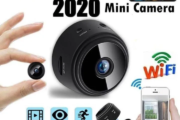Find What You Love. Save While You Shop.
The Workshop on the Economics of Information Security (WEIS) is the leading forum for interdisciplinary scholarship on information security, combining expertise from the fields of economics, social science, business, law, policy and computer science. Prior workshops have explored the role of incentives between attackers and defenders, identified market failures dogging Internet security, and assessed investments in cyber-defense. Current contributions build on past efforts using empirical and analytic tools to not only understand threats, but also strengthen security through novel evaluations of available solutions. Economics of Information Security and Privacy III addresses the following questions: how should information risk be modeled given the constraints of rare incidence and high interdependence; how do individuals’ and organizations’ perceptions of privacy and security color their decision making; how can we move towards a more secure information infrastructure and code base while accounting for the incentives of stakeholders?
In the late 1990s, researchers began to grasp that the roots of many information security failures can be better explained with the language of economics than by pointing to instances of technical flaws. This led to a thriving new interdisciplinary research field combining economic and engineering insights, measurement approaches and methodologies to ask fundamental questions concerning the viability of a free and open information society. While economics and information security comprise the nucleus of an academic movement that quickly drew the attention of thinktanks, industry, and governments, the field has expanded to surrounding areas such as management of information security, privacy, and, more recently, cybercrime, all studied from an interdisciplinary angle by combining methods from microeconomics, econometrics, qualitative social sciences, behavioral sciences, and experimental economics.This book is structured in four parts, reflecting the main areas: management ofinformation security, economics of information security, economics of privacy, and economics of cybercrime. Each individual contribution documents, discusses, and advances the state of the art concerning its specific research questions. It will be of value to academics and practitioners in the related fields.
This book constitutes the refereed proceedings of the 28th IFIP WG 11.3 International Working Conference on Data and Applications Security and Privacy, DBSec 2014, held in Vienna, Austria, in July 2014. The 22 revised full papers and 4 short papers presented were carefully reviewed and selected from 63 submissions. The papers are organized in topical sections on access control, privacy, networked and mobile environments, data access, cloud databases, and private retrieval.
What is it about software that makes security such a problem? If you want to build secure software, how do you do it? These questions and the perseverance of three of the world’s leading security experts, Gary McGraw, John Viega, and Greg Hoglund, led to the three books contained in this package.Building Secure Software: How to Avoid Security Problems the Right Way, the white hat book, seems to have touched off a revolution. Security people who once relied solely on firewalls, intrusion detection, and anti-virus mechanisms came to understand and embrace the necessity of better software. This book provides a coherent and sensible philosophical foundation for the blossoming field of software security. Exploiting Software: How to Break Code, the black hat book, provides a much needed balance, teaching how to break software and how malicious hackers write exploits. This book is meant as a reality check for software security, ensuring that the good guys address real attacks and invent and peddle solutions that actually work. Exploiting Software and Building Secure Software are in some senses mirror images. Software Security: Building Security In unifies the two sides of software security–attack and defense, exploiting and designing, breaking and building–into a coherent whole. Like the yin and the yang, software security requires a careful balance.
- 【Dual Lens Security Camera with 2TB HDD】Movols outdoor PoE security camera system with dual 3.6mm lenses: bullet camera and dome camera provide 360° angle coverage and truly dead-angle free 2-screen UHD images. Built in 2TB HDD gives you a long video retention time(maximum supports 10TB HDD),24/7 recording security camera with non-stop surveillance by this wired security camera system. the Video files can be stored up to 60 days. All video data are encrypted and saved locally, no monthly fees.
- 【2K Super HD & Color Night Vision】The Dual Lens POE Camera adopts 3MP+3MP resolution of 2560*1440 pixels. built-in 8 infrared and 8 white lights which provide 3 night vision modes: black and white, full-color, and smart night vision. capture more details in low light conditions, making it much easier to read the license plate of an intruder within 100ft. Effortlessly review important footage or relive funny moments by searching through specific days, hours, or minutes in the playback feature.
- 【AI Human Detection & Auto Tracking & Instant Alerts】The home security camera system is equipped with motion detection AI algorithm triggered by human or object movement, which can customize the camera’s motion detection to specific areas that matter most,realize human detection, automatic tracking and intelligent alarm function,automatically turn on the spotlights and siren alarm to help you deter intruders, and send real-time alerts to your phone in time so that you can check what’s going on.
- 【Panoramic Surveillance & 2-Way Audio】The PTZ PoE security cameras can be rotated 355° horizontally and 90° vertically, covering a 360° field of view to ensure your vision without dead angles and record every move of the intruder.The built-in speaker and microphone enable two-way audio, allowing you to communicate with visitors or deter intruders,protect your family or property from potential dangers.
- 【Plug and Play & Stable Connection & Strong Signal】Movols wired PoE security camera system is truly plug and play, perfect for beginners, Simply connect the PoE IP camera to the NVR with a single Ethernet cable for both data and power transmission, ensuring a more stable and reliable connection compared to wireless systems,the NVR supports to expand to 8 channels to meet more monitoring needs and supports cameras with up to 4K resolution.
The purpose of this book is to show you how to design and create node.js modules. Node.js modules are external functions or objects that you can integrate into your project. You can think of them as a library. They are written in separate JavaScript files and can be assigned to a variable in your main file with one line of code. If you know how to write JavaScript you know to create a module.
Why Modules?
Node.js projects can grow very quickly to the point where they will no longer fit into one *.js file. Modules are a way to break the code up into manageable and testable chunks. With browser based JavaScript, HTML script tags are one way to pull multiple source files into one place. Node.js doesn’t have that option. Instead, it relies on the built-in require module to pull code from one JavaScript file into another.
What this Book Covers
This book walks through the steps of designing and creating node.js modules. It starts with how to convert JavaScript objects into modules and export them for external use. Other areas that this book covers include: naming exports, constructor parameters, properties, methods, inheritance, callbacks, promises and unit testing.
Here is a more detailed breakdown of the book by chapter:
Objects as Modules – The book starts with the creation of a simple module which returns a single object. A factory based module is introduced that can create multiple objects. Learn how to seal an object to protect it from changes.Objects as Modules – The book starts with the creation of a simple module which returns a single object. A factory based module is introduced that can create multiple objects. Learn how to seal an object to protect it from changes.
Properties – The next step after defining objects is to add properties. Learn how to add properties that can be enumerated and protected against invalid values.Properties – The next step after defining objects is to add properties. Learn how to add properties that can be enumerated and protected against invalid values.
Methods – Methods are what functions are called when they are part of an object. Define methods that can accept named parameters. Learn how to chain methods together and guard against invalid parameters.Methods – Methods are what functions are called when they are part of an object. Define methods that can accept named parameters. Learn how to chain methods together and guard against invalid parameters.
Module Parameters – Modules can be passed parameters, just like a functions or methods. Learn how to pass parameters to a module or a factory function to construct objects.Module Parameters – Modules can be passed parameters, just like a functions or methods. Learn how to pass parameters to a module or a factory function to construct objects.
Named Exports – Instead of returning the whole module, only return part of it. Learn how to export named objects and functions and special techniques for naming factory related exports.Named Exports – Instead of returning the whole module, only return part of it. Learn how to export named objects and functions and special techniques for naming factory related exports.
Inheritance – Modules and objects can be derived from other modules and objects. Learn how to derive and combine objects and override methods in parent objects.Inheritance – Modules and objects can be derived from other modules and objects. Learn how to derive and combine objects and override methods in parent objects.
Callbacks – When using third party libraries with callbacks, care must be taken to integrate them into a module. Learn how to create modules that wrap existing callbacks and define new callbacks.Callbacks – When using third party libraries with callbacks, care must be taken to integrate them into a module. Learn how to create modules that wrap existing callbacks and define new callbacks.
Promises – Callbacks calling callbacks calling callbacks can get out of hand. Learn how to create modules that wrap third party callbacks in promises and define new promises.Promises – Callbacks calling callbacks calling callbacks can get out of hand. Learn how to create modules that wrap third party callbacks in promises and define new promises.
Unit Testing – When making changes to a module it is handy to be able to run a suite of tests to make sure that nothing broke. It’s also helpful to make sure that new functionality works as expected. Learn how to create and run unit tests against modules.Unit Testing – When making changes to a module it is handy to be able to run a suite of tests to make sure that nothing broke. It’s also helpful to make sure that new functionality works as expected. Learn how to create and run unit tests against modules.
Publisher’s Note: Products purchased from Third Party sellers are not guaranteed by the publisher for quality, authenticity, or access to any online entitlements included with the product.
Effective program even the most sophisticated facilities. Here’s the easy to gather, organize, and assess any client’s building use data–so you can effectively design everything from office towers to health and educational facilities. Loaded with checklists, forms, and questionnaires that help you determine room size, use and function requirements, staff and employee projections, permit fees, and much more. Architectural Programming, by Robert R. Kumlin, will help you: select and organize the programming team; compile architectural data; choose and utilize common area measurement systems, including AIA, ANSI, and NRC; determine and communicate the priorities of the project in guiding and evaulating the design process; overcome conflicting interests and achieve a creative program consensus; much more.
Confidently adapt your nursing education program to the cutting-edge caring method with the experienced insight of the Chamberlain University College of Nursing. From effective faculty development to proven patient satisfaction strategies, this case-based monograph outlines your path to better patient-focused outcomes and institutional excellence.
Apply the experienced insight of the Chamberlain University College of Nursing to:
Avoid common pitfalls in adapting your program
Create a caring environment for faculty and students
Recognize and develop faculty
Build a path to better patient outcomes
Presenting a selection of trailblazing creativity from around the globe tightly curated by the Behance team, Super-Modified takes you inside the trends driving today’s most exciting art and design. For example, the book looks at how a humble material such as felt is currently experiencing a renaissance in office spaces, furniture, and character design; how computer algorithms are being used to generate an infinite variety of breathtaking abstract shapes; how a focus on recycled design is making everything from discarded aluminum cans to shipping containers fair game for reinvention; and how the grand, cinematic visions of traditional architecture are finding their way into interior spaces. And that’s just a small sample of the themes explored within. Behance’s first book is comprised of 18 chapters, each of which represents a different facet of “super-modified” creative work. From innovative approaches to traditional crafts to wildly unexpected uses of new technologies, it tracks how classic approaches to art and design are being subverted, blurred, and reinvented by a remarkable group of emerging creatives. Featuring outstanding graphic design, photography, fashion, architecture, and illustration, Super-Modified surveys the landscape of global creativity and offers insight into what’s coming next.
This study explains why the Big Bang was intelligently controlled and the most exquisitely designed phenomena science has ever discovered. How the latest scientific discoveries can shed light on some theological questions, such as: how can God hear an answer the prayers of billions of people all at the same time? Why we cannot understand the Trinity. And how Jesus can pay for everybody’s sin in just a few hours while on the cross?
This Workbook contains a Beginner’s Guide with more than 50 Doodles & Embellishments to Trace. Also Four Different Alphabets, both Upper and Lower Case Alphabet Practice Pages, 15 Practice Words and 10 Creative Projects. Hand Lettering is an Art anyone can learn with Practice, & is a Fun, Relaxing and Rewarding Hobby. Create Beautiful Letter Art
If you’ve ever wished for advice you can trust on how to make science and math more relevant to your middle or high school students, Creating Engineering Design Challenges is the book for you. At its core are 13 units grounded in challenge-based learning and the engineering design process. You can be sure the units are classroom-ready because they were contributed by teachers who developed, used, and revised them during the Cincinnati Engineering Enhanced Math and Science (CEEMS) program, a project funded by the National Science Foundation. Detailed and practical, the book is divided into three sections: 1. The rationale for making engineering an effective part of math and science instruction. 2. Thirteen engineering-related units, including the teacher-contributors’ detailed accounts, lesson plans, and handouts. Content areas include biology, chemistry, physical science, Earth science, and environmental science. Topics range from developing a recipe for cement to implementing geocaching to calculating accurate aim with slingshots and water balloons. 3. Guidance on how to develop, support, and grow your engineering practice. This section offers useful templates and frameworks for you. ,
Mobile First? In reality, it’s humans first.The first edition of Justin Dauer’s 2017 book Cultivating a Creative Culture was written around a core concept: empathy, humility, and creativity at the office—permeating how we treat one another, support one another, and the collective influence upon how we create.It’s upon that last notion, “how we create,” where this second edition further focuses on the parallels between “making” and “interacting.” Process and practice. Design and culture.We cannot preach outwardly about empathy for those we’re designing for if as designers, researchers, architects, developers (and on and on) we’re not supporting each other. The notion of being human-centered has an innate synergy between design process (and ultimate product) and office culture (and empathetic interactions). To the benefit of both dynamics, those touch points are identifiable and exploitable.Creating with compassion in an environment fueled by compassion means we never lose sight of what it’s all about: people. Beyond functioning in this manner because “it’s the right thing to do,” quality of design work, loyalty internally (team) and externally (users), and product innovation are all benefits to reap.Join Justin as he demonstrates how putting humans first – in our design process and in the workplace – yields a successful end product and an endlessfountain of inspiration.With a new foreword by Steve Portigal, author of “Doorbells, Danger, and Dead Batteries: User Research War Stories,” and “Interviewing Users: How to Uncover Compelling Insights.”
Design professionals rely on Adobe’s Creative Suite Design Premium to deliver innovative ideas in print, Web, and mobile design. Adobe CS4 Design Premium All-in-One For Dummies helps you beef up your skills with the latest version of this software. You’ll learn all about the hot new versions of InDesign, Illustrator, Photoshop, Acrobat, Dreamweaver, Flash, and Fireworks. Whether you’re creating newsletters, Web sites, cool original art, or animations, this book has it covered. You’ll find out how to build Web pages with text and drawings, photos, Flash animations, and rollovers; check out enhanced Photoshop 3D tools; develop interactive animations for the Web or video with Flash CS4; and use the easier rollover and action features in Dreamweaver CS4 to add interactivity without coding. You’ll also discover:How to get familiar with the menus, panels, and tools that are similar throughout the suiteHow to get familiar with the menus, panels, and tools that are similar throughout the suiteTips for getting creative with Illustrator’s cool new vector tracing featureTips for getting creative with Illustrator’s cool new vector tracing featureWays to use the annotation capabilities in Acrobat 9.0 and the improved CSS capabilities in DreamweaverWays to use the annotation capabilities in Acrobat 9.0 and the improved CSS capabilities in DreamweaverWhat Fireworks CS4, the newest addition to the suite, can add to Web sitesWhat Fireworks CS4, the newest addition to the suite, can add to Web sitesWhich extensions and filters are common to all programsWhich extensions and filters are common to all programsHard-to-find keyboard shortcuts in IllustratorHard-to-find keyboard shortcuts in IllustratorHow to enhance and manipulate photos with PhotoshopHow to enhance and manipulate photos with PhotoshopSecrets for smoothing out your workflowSecrets for smoothing out your workflowHow to use the Adobe BridgeHow to use the Adobe BridgeSteps for using each programSteps for using each programTo help you quickly find what you need, Adobe CS4 Design Premium All-in-One For Dummies is divided into eight minibooks:Adobe Creative Suite BasicsAdobe Creative Suite BasicsInDesign CS4InDesign CS4Illustrator CS4Illustrator CS4Photoshop CS4Photoshop CS4Acrobat CS4Acrobat CS4Dreamweaver CS4Dreamweaver CS4Flash CS4Flash CS4Fireworks CS4Fireworks CS4Adobe CS4 Design Premium All-in-One For Dummies is your one-stop guide to all the parts of Adobe’s ultimate toolkit for today’s designer.
Everything begins with you! Let your imagination become a part of your life…Put good vibes and motivation back into your day with this coloring book for adults. It also includes a variety of motivational sentences to make your life more relaxed and enjoyable. You don’t need any special skills. Even if you haven’t drawn anything, ever, you will enjoy coloring in this booklet. Let your inner artist out. Suitable for adults and young people. Guaranteed hours of pleasure, relaxation and relief from stress. Each drawing is on a separate page, so you can share. This coloring book is the perfect gift for friends, family, and anyone else you love. Join us in this special journey! It will inspire you and introduce you to the hidden artist found in all of us.
Full-color guide and video tutorials make a powerful combo for learning design applications in the Adobe Creative CloudIf you like the idea of tackling the design and web applications in Adobe’s Creative Cloud in smaller bites, then this is the book-and-video training learning combo for you. More than 25 lessons, each including step-by-step instructions and lesson files backed by video tutorials, help you get comfortable with all features and functions. Work at your own pace, while you steadily build skills in InDesign, Illustrator, Photoshop, Dreamweaver, Flash, and Fireworks. With this Digital Classroom training package, you have your own private instructor showing you the easiest way to learn the latest Adobe design apps.Combines a full-color, step-by-step instructional book along with lesson files and video training on DVD, to teach users how to use the latest versions of InDesign CC, Illustrator CC, Photoshop CC, Dreamweaver CC, Flash CC, Fireworks CC, and Adobe BridgeCombines a full-color, step-by-step instructional book along with lesson files and video training on DVD, to teach users how to use the latest versions of InDesign CC, Illustrator CC, Photoshop CC, Dreamweaver CC, Flash CC, Fireworks CC, and Adobe BridgeProvides thorough training from a team of expert instructors from American Graphics Institute (AGI)Provides thorough training from a team of expert instructors from American Graphics Institute (AGI)Start confidently creating the rich and interactive content viewers demand with this practical learning product, Adobe Creative Cloud Digital ClassroomNote: DVD and other supplementary materials are not included as part of the e-book file, but are available for download after purchase.
Create compelling, original characters using archetypes and design elements such as shadows and line with the tips and techniques found in this image-packed book. Bryan Tillman bridges the gap between the technique of drawing characters and the theory of good character design by using case studies, examples of professional art, and literary and pop culture references to teach you how to develop a character, not just draw one. The book also features Character Model Sheets that will guide you through the creation of new and unique characters. Finally, Bryan will break down established character archetypes to show you why and how the different aspects of good character design work. The content on the book is based on Bryan’s popular 2009 Comic-Con course on “Character Design.”
This book takes you through all the basic steps of character design for games and animation, from brainstorming and references to the development phase and final render. It covers a range of styles such as cartoon, stylized and semi-realistic, and explains how to differentiate between them and use them effectively. Using a step-by-step approach for each stage of the process, this book guides you through the process of creating a new character from scratch. It contains a wealth of design tips and tricks as well as checklists and worksheets for you to use in your own projects. This book covers how to work with briefs, as well as providing advice and practical strategies for working with clients and creating art as a product that can be tailored and sold. This book will be a valuable resource for all junior artists, hobby artists, and art students looking to develop and improve their character development skills for games and animation.
Winner of the 2016 Coup de Coeur prize at the Plumes des Achats & Supply Chain, Paris.
Focusing on the design of robust value-creating supply chain networks (SCN) and key strategic issues related to the number; location, capacity and mission of supply chain facilities (plants, distribution centers) – as well as the network structure required to provide flexibility and resilience in an uncertain world – this book presents an innovative methodology for SCN reengineering that can be used to significantly improve the bottom line of supply chain dependent businesses. Providing readers with the tools needed to analyze and model value creation activities, Designing Value-Creating Supply Chain Networks examines the risks faced by modern supply chains, and shows how to develop plausible future scenarios to evaluate potential SCN designs. The design methods proposed are based on a visual representation formalismthat facilitates the analysis and modeling of SCN design problems, book chapters incorporate several example problems and exercises which can be solved with Excel tools (Analysis tools and Solver) or with commercial statistical and optimization software.
How to get cashback?
we approve your purchase
request button





































